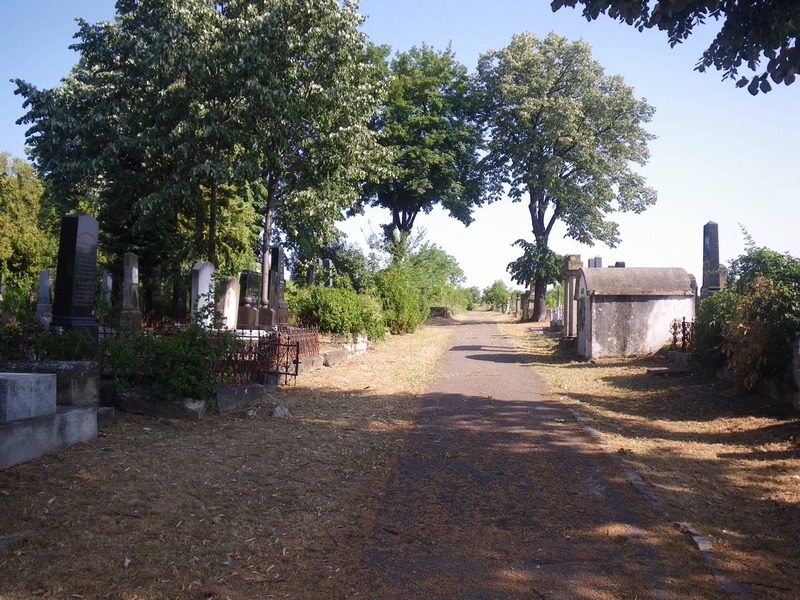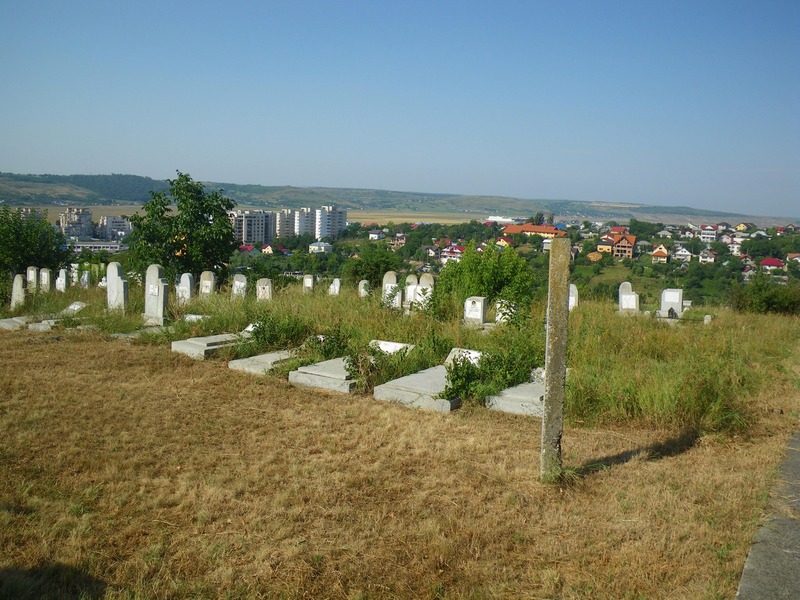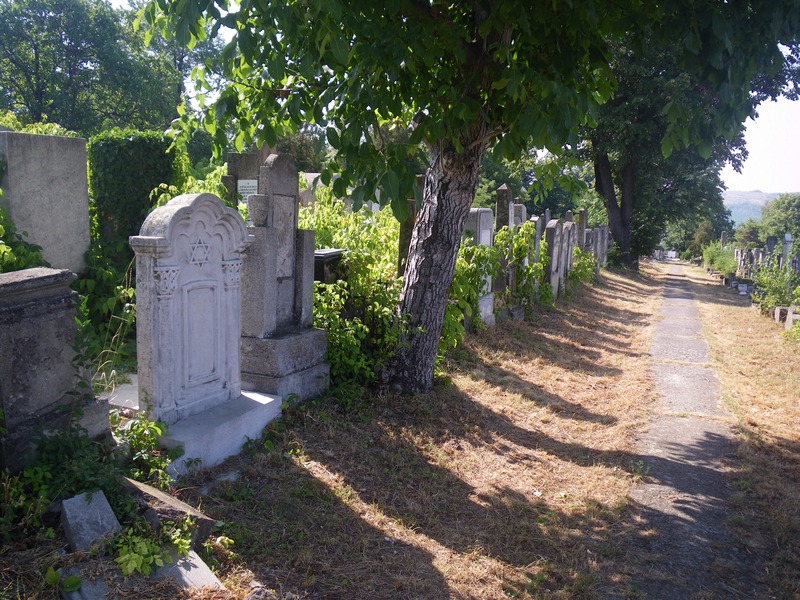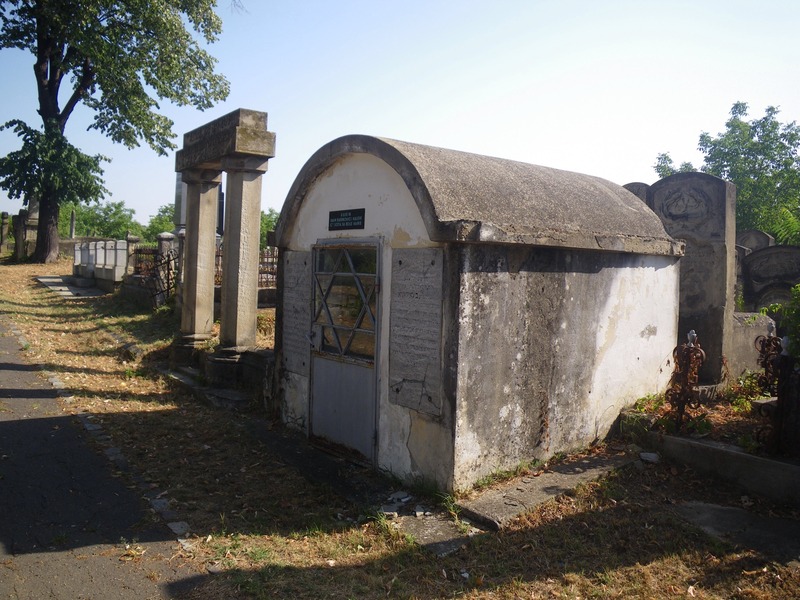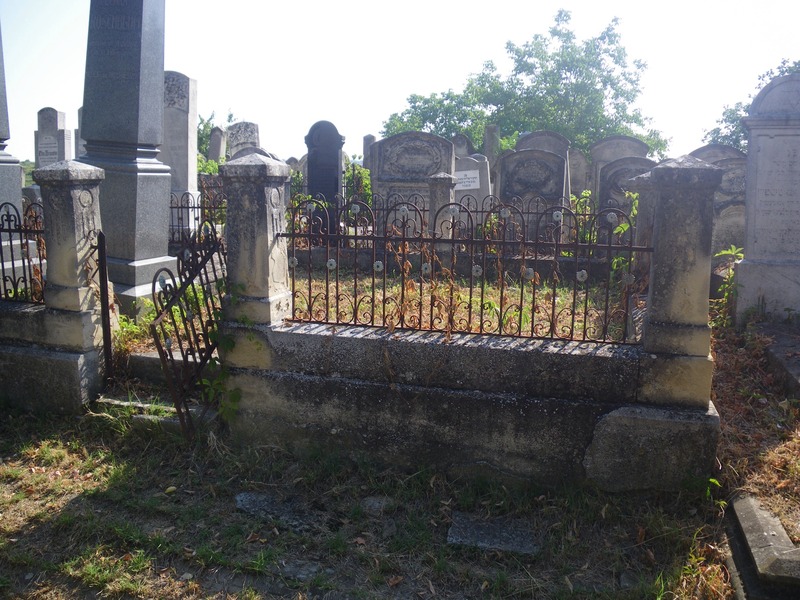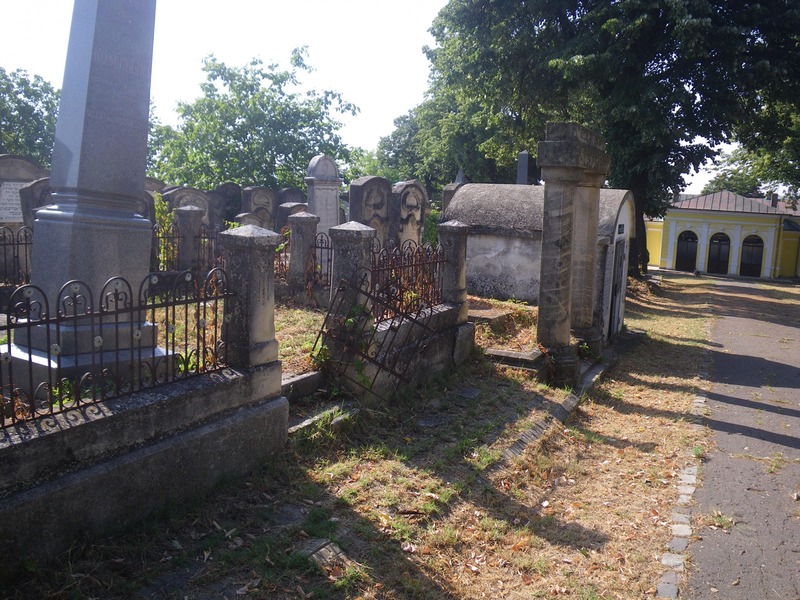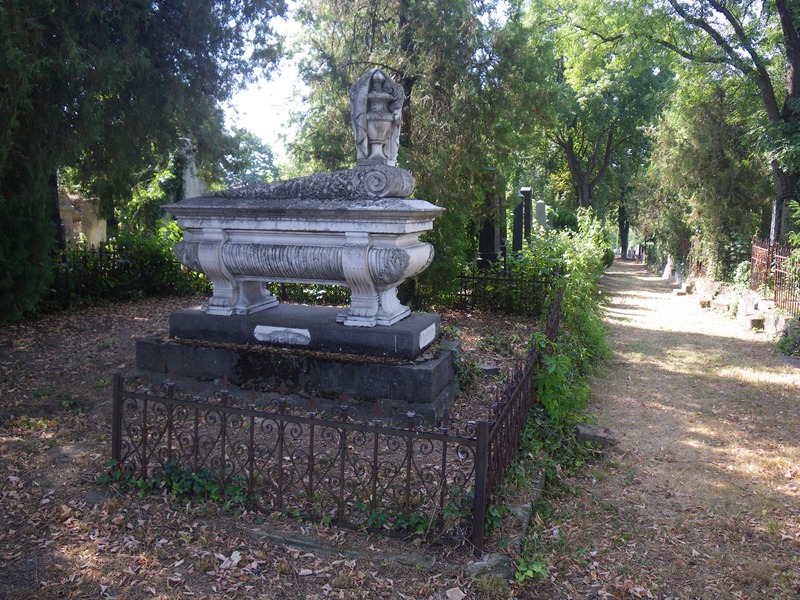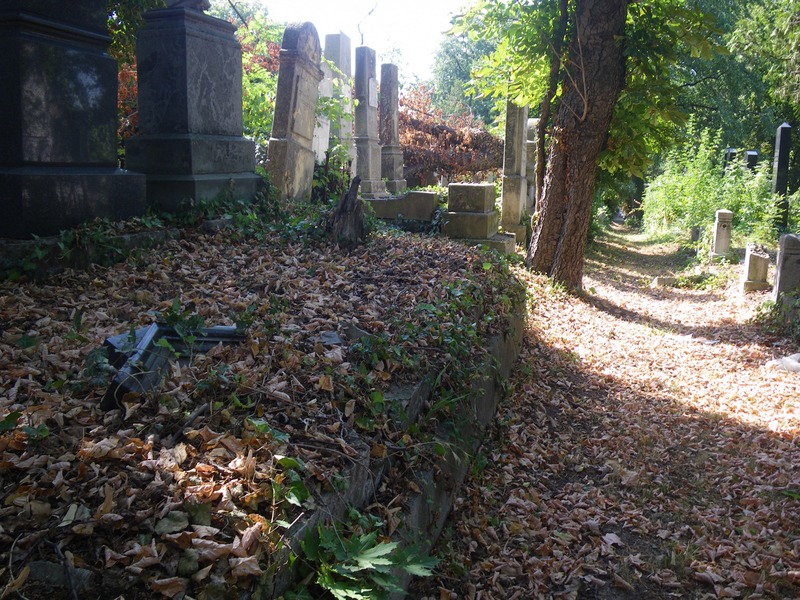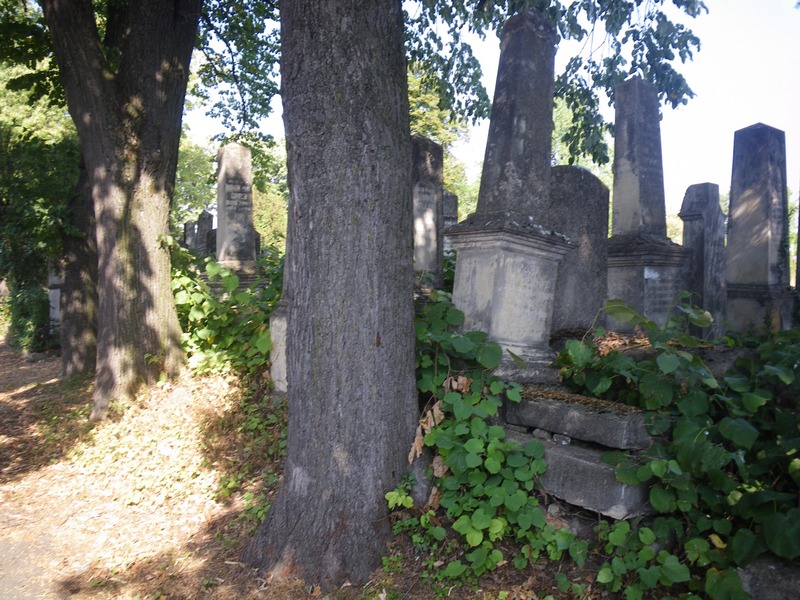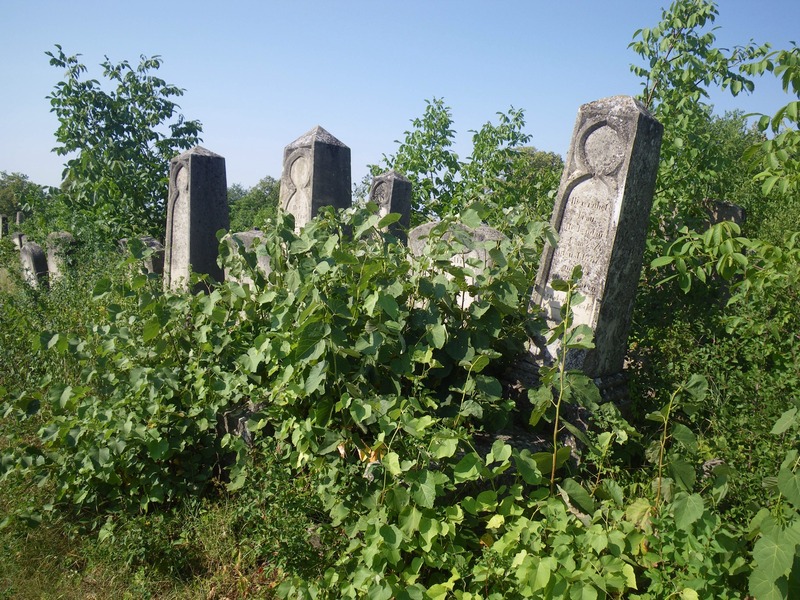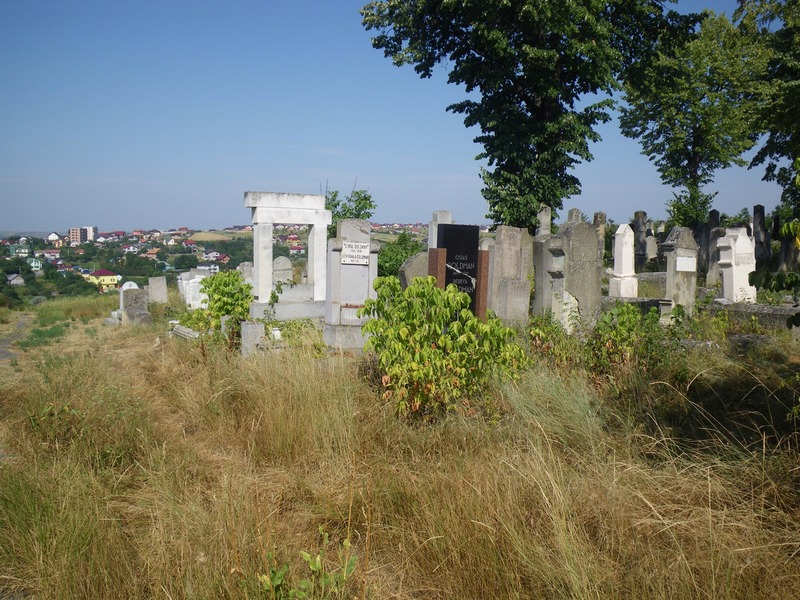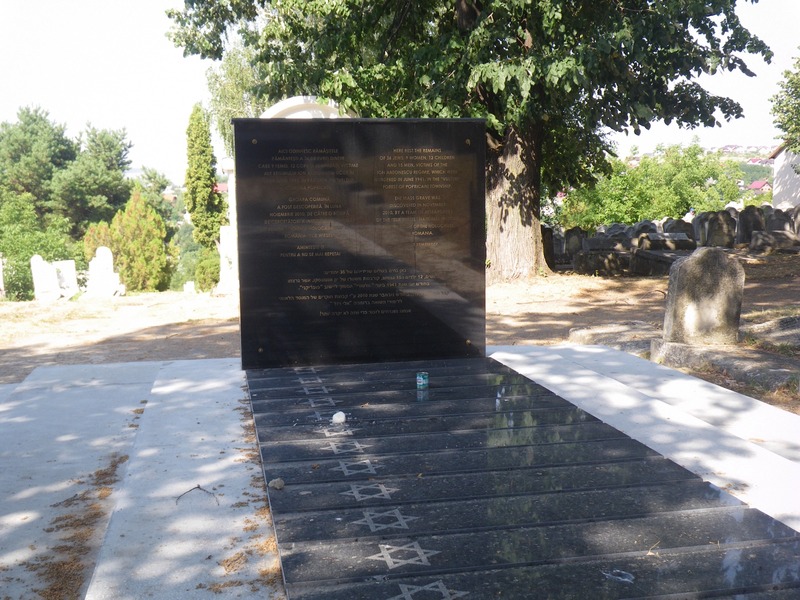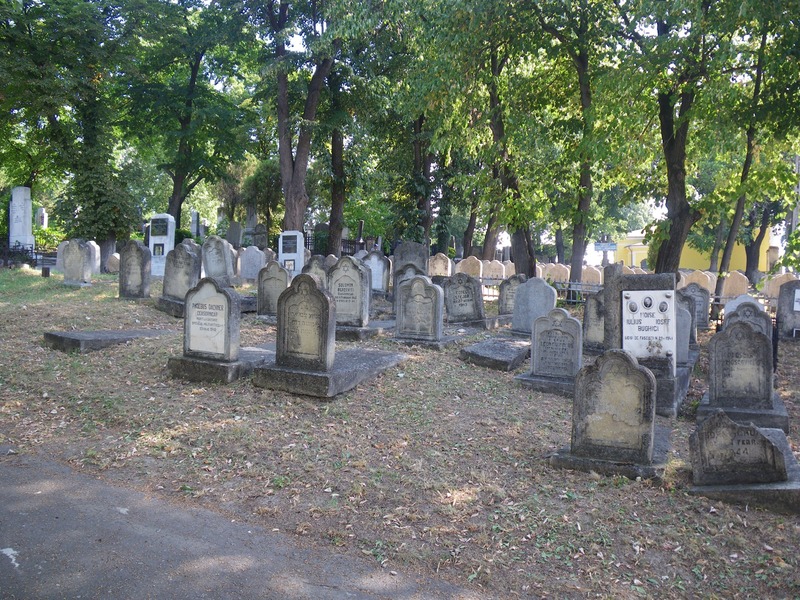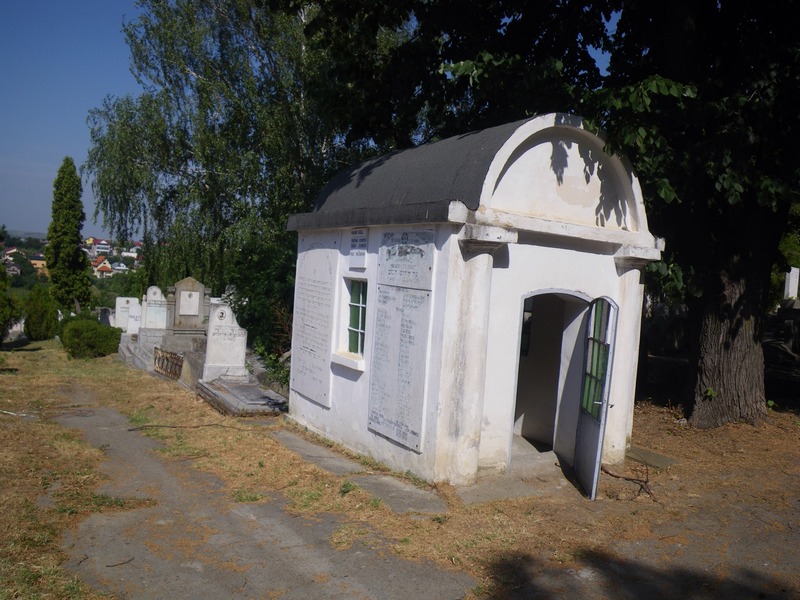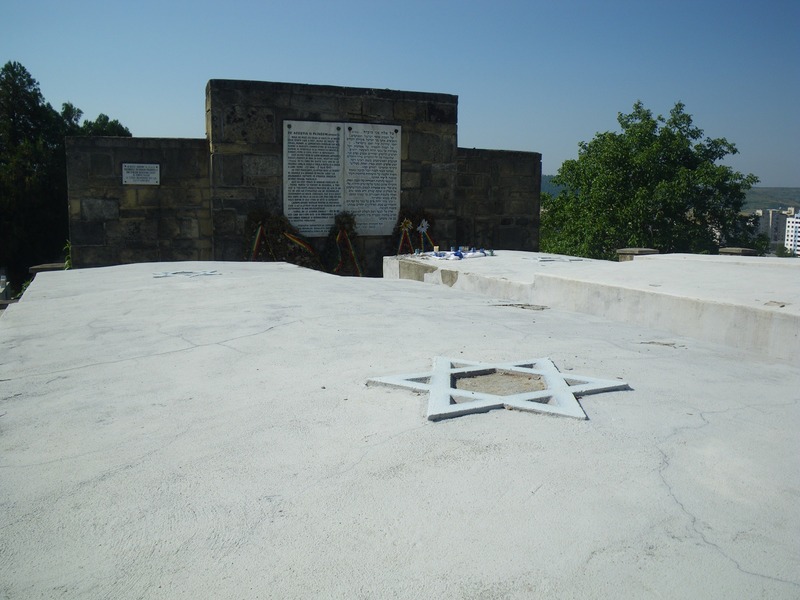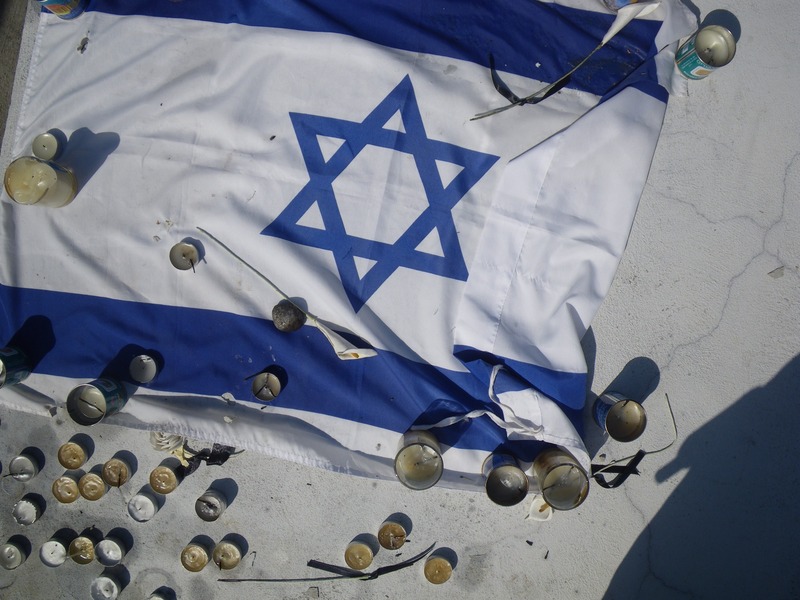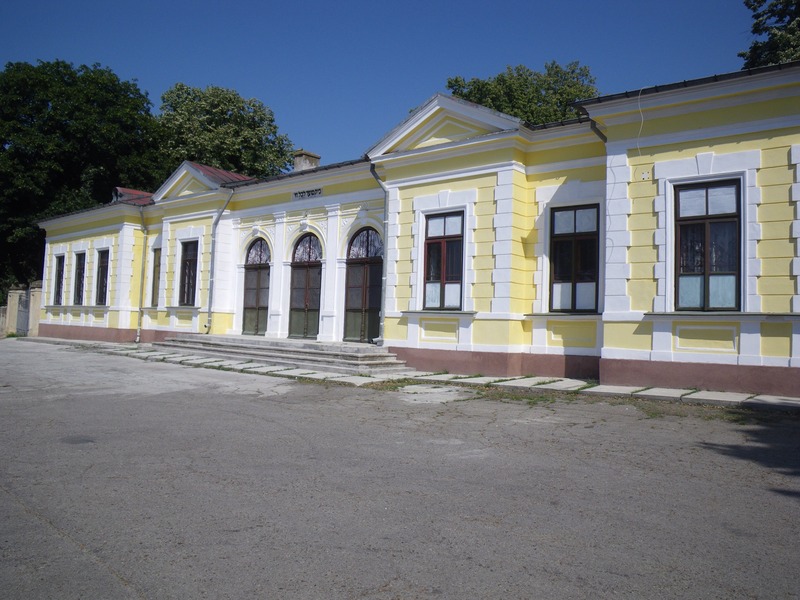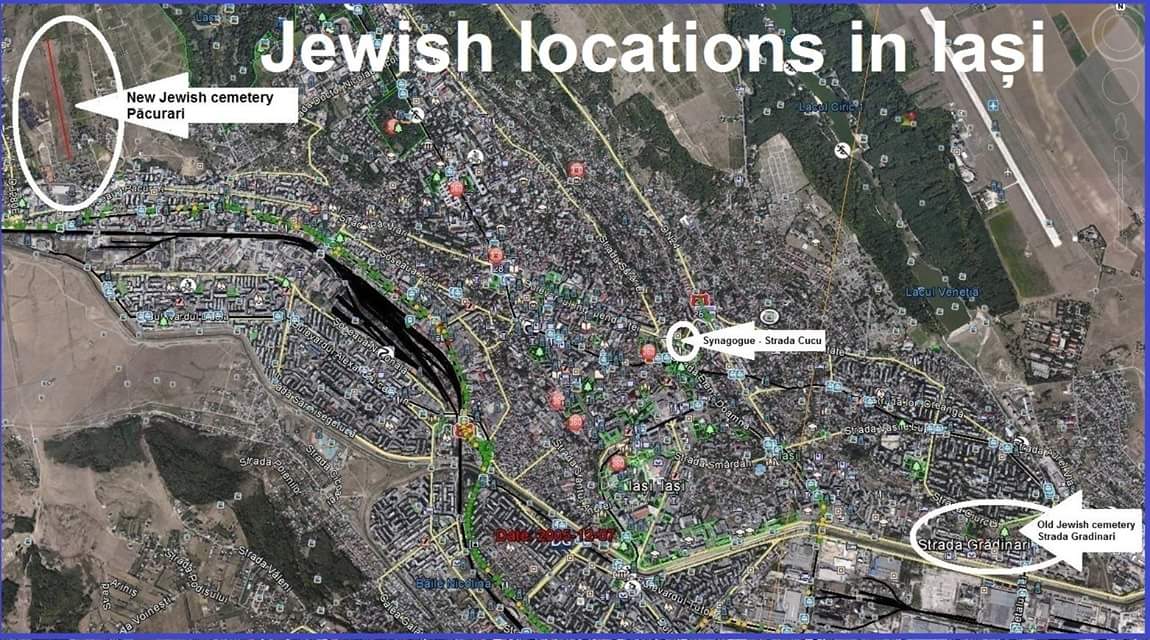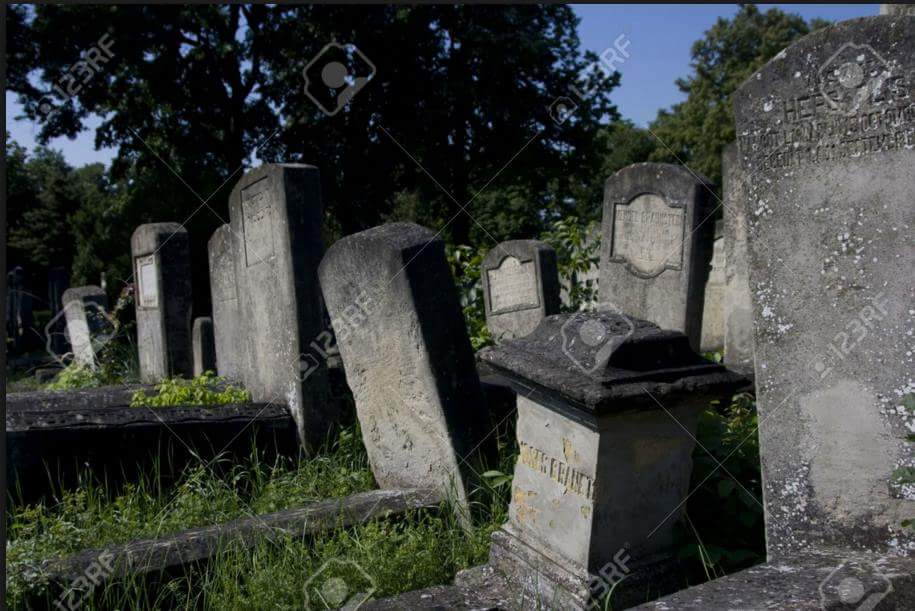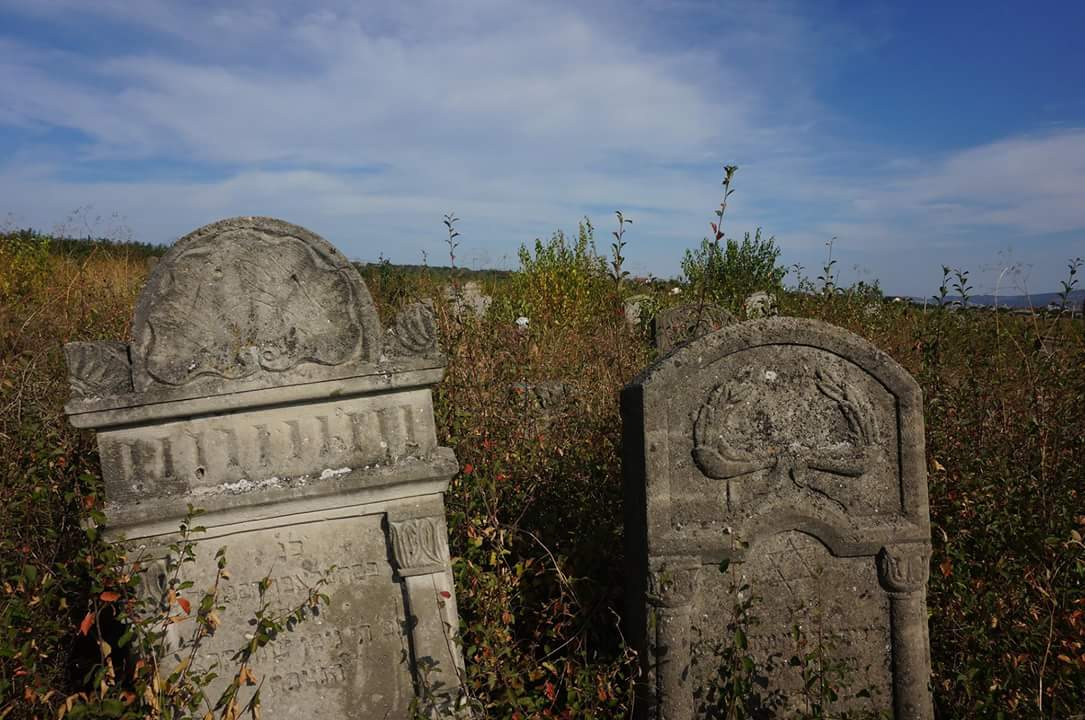 Alternate names: Iaşi [Rom], Yas, יאס [Yid], Jassy [Ger, Pol], Jászvásár [Hun], Iassy [Rus], Iasy [Ukr], Yaş [Tur], Yassy, Yassi, Yashi, Jasi, Socola, Socol, Podgoria, Păcureţ, Păcurari, Munteni, Ilasi, Galata, Copou-Târg, Copou. Located at 47°10' N, 27°36' E ' in Iasi County, Moldavia region. Iasi is pronounced "YASSY" in English and "YASH" in Romanian. Second-largest city in Romania and capitol of Moldavia. 1900 Jewish population: 39,441. Yizkors:
Alternate names: Iaşi [Rom], Yas, יאס [Yid], Jassy [Ger, Pol], Jászvásár [Hun], Iassy [Rus], Iasy [Ukr], Yaş [Tur], Yassy, Yassi, Yashi, Jasi, Socola, Socol, Podgoria, Păcureţ, Păcurari, Munteni, Ilasi, Galata, Copou-Târg, Copou. Located at 47°10' N, 27°36' E ' in Iasi County, Moldavia region. Iasi is pronounced "YASSY" in English and "YASH" in Romanian. Second-largest city in Romania and capitol of Moldavia. 1900 Jewish population: 39,441. Yizkors:
-
- Pinkas ha-kehilot; entsiklopediya shel ha-yishuvim le-min hivasdam ve-ad le-aher shoat milhemet ha-olam ha-sheniya: Romania vol. 1
(Jerusalem, 1969) - Contribuții la istoria obștii evreilor din Iași
(București, 1997)
"... figures prominently in Jewish history, with the first documented presence of Sephardi Jews from the late 16th century. The oldest tomb inscription in the local cemetery probably dates to 1610. By the mid-19th century, owing to widespread Russian Jewish and Galician Jewish immigration into Moldavia, the city was at least one-third Jewish. In 1855, Iași was the home of the first-ever Yiddish-language newspaper, Korot Haitim, and, in 1876, the site of what was arguably the first-ever professionalYiddish theater performance, established by Avraham Goldfaden. The words of HaTikvah, the national anthem of Israel, were written in Iași by Naftali Herz Imber. Jewish musicians in Iași played an important role as preservers of Yiddish folklore, as performers and composers.
According to the 1930 census, with a population of 34,662 (some 34%) out of the total of 102,872, Jews were the second largest ethnic group in Iași. There were over 127 synagogues. After World War II, in 1947, there were about 38,000 Jews living in Iași. During the Postbellum period, Iași played a prominent part in the revival of Yiddish culture in Romania, and, from 1949 to 1963, it was home to a second company of the State Jewish Theater. The intellectuals of Iași included many Jewish academics, scientists, writers, journalists, doctors, lawyers, and engineers. However, the number of Jews continued to drop because of massive emigration to Israel and, in 1975, there were about 3,000 Jews living in Iași and four synagogues were active. Currently, Iași has a dwindling Jewish population of ca. 300 to 600 members and two working synagogues, one of which, the 1671 Great Synagogue, is the oldest surviving synagogue in Romania.[23] Outside of the city on top of a hill there is a large Jewish Cemetery which has graves dating from the late 19th century; burial records date from 1915 to the present day and are kept in the community center. Since 1996, an annual publication on the history of the Jews in Romania, Studia et acta historiae Iudaeorum Romaniae, has been published by the local history and archeology institutes of the Romanian Academy.[22] There is also a Jewish community center serving kosher meals from a small cantina." Wikipedia. [Mar 2014]Czernowitz Bukovina [Mar 2014]
Jewish Bukovina [Mar 2014] - Pinkas ha-kehilot; entsiklopediya shel ha-yishuvim le-min hivasdam ve-ad le-aher shoat milhemet ha-olam ha-sheniya: Romania vol. 1
JOWBR: Iasi Jewish Cemetery
- In 1831, there were about 3,000 Jews in Iasi in 1859 they were about 30% of the whole population; in 1910, there were about 35,000 Jews; in 1930, they were over 40,000. Current Jewish population [late 1990s] of Iasi amounts to less than 2% of its total number before the war, i.e. to about 600 people. Source: http://home.dntis.ro/~fce96 [December 2000]
- Czernowitz Bukovina [Mar 2014]
- Jewish Bukovina [Mar 2014]
REFERENCES:
- This email address is being protected from spambots. You need JavaScript enabled to view it.. Like Shells on a Shore. Projekt 36, Bern, Switzerland, 2010. To order, contact Mr. Geissbuhler. history and photographs. [December 2010]
-
ShtetLink: [July 2010]
- map. [August 2005]
- abandoned sites Jewish Heritage Travel: A Guide to East-Central Europe by Ruth Ellen Gruber- New York: John Wiley & Sons, Inc., 1992- 218-220; Synagogue; 219
- Iasi Jewish Community website [October 2000] "Rabbi, Shlomo ben Aroga, most of them dating from round 1580. These documents do not certify that he was the first or the oldest Rabbi; yet, they are important for, indirectly, they point to the existence of a well organized community, having a cemetery, a synagogue, a micva, a talmud-tora, and a shohet (a Jewish butcher). In 1940, in the Ciurchi cemetery - a few years later desecrated by the Nazis - there was a tombstone dating from 1610. It is from the same century that came down to us old, official papers granting rights to the Jewish community as an institutional organisation. Among these rights we could mention: the right to live in any part of the town and not only in the ghetto, the right to practice any trade or craft, to have a family, to own property of any kind including houses. The leaders of the Iasi Jewish guild - its head and his counsellors - were elected by the members of the community and confirmed by the King or his council of state. The guild used to pay jointly the tribute on behalf of all the members of the community. The sum of money represented the taxes for the kosher meat, wine, candles, yeast, etc. This type of organisation lasted until 1831. ..." (and much more history and community information) [December 2000].
- Cercetary epigrafice (Jewish epigraphic research) in Annuar pentru Israeliti v. 17, 1895, pp. 50 - 62, by W. Schwarzfeld, Romanian. 29V4851: Dates: 10 tombstones, 1716 - 1772. Chiefs of the nation [?] of Moldavia, 6 inscriptions, 1743 + 1849: Iasi Rabbis, judges and scholars. Source: Tagger, Mathilde. Printed Books on Jewish Cemeteries in the Jewish National and University Library in Jerusalem: an annotated bibliography. Jerusalem: The Israel Genealogical Society, 1997.
Burial register for the first half of the twentieth century, separate books for males and females, are available at the archives of the Iasi Jewish community in the Comuniate building. Some give name, Hebrew year of death, month day, section number in cemetery, row and grave number, and sometimes dates. Many inscriptions are in German. Source: Researching Jewish Romania On Site by Paul Pascal] The cemetery's 80,000 graves include some stones moved from older cemetery destroyed by the Nazis and a mass grave of those killed during massacre in 1941. Most graves are from the very late-nineteenth and twentieth century years. Cemetery caretaker is on premises; and Jewish community has map of cemetery. Source: Rick Bercuvitz
Information from JewishGen Digest on 30 Oct 2012:" The Iasi Jewish Cemetery located on Sos. Pacurari (Aleea Cim. Evreiese) has s a large arch above the entrance. The road winds past the arch about mile to the actual cemetery. Some new homes are being constructed along the road. "At the end of the road is an administration building and parking lot. A caretaker lives in the administration building and gives tours of the cemetery for a fee. The caretaker did not speak English. We paid 100 Leu (about US $30) for a tour. The caretaker keeps over a dozen dogs on the cemetery grounds for security. When you are with the caretaker the dogs are very friendly. We were told they are not friendly to trespassers. We brought a copy of our ancestors burial information printed from the JOWBR database. The caretaker does not have access to these records so you must bring them with you. The original records are kept at the Iasi Jewish Community but the very oldest ones are written in Aramaic and no one there can read them. We had a Romanian speaker with us which was very helpful as the caretaker did not speak English. Using the section and division information from JOBWR, the caretaker was eventually able to take us to the correct part of the cemetery. ... In the older part of the cemetery, the sections are fairly small (perhaps 20 yards square). At each corner of the section is identification information carved into a tombstone and painted blue. Note that in the older part of the cemetery men and women were not buried in the same section. I am unsure if identification information in the newer sections of the cemetery follow the same pattern. Below is an example of the identification information and how to interpret it: D2 Division II C3 Section III R1 N1 Row 1, Number 1 (not in JOWBR) B Barbat (Male) -- as opposed to Femeie (Female) If you would like to see videos of section markers and graves in Division 2 Section 3 please click on the youtube links below. There are about 100 graves in this section. Most of the graves have only large stone markers lying flat on the ground. A dozen or so of the graves also have standing headstones (the videos show each of these so you can read them). The Hebrew characters on the flat markers are practically impossible to read due to erosion. The standing headstones are in fairly good condition. The whole cemetery is very overgrown with weeds and shrubs. In the newer sections most of the headstones have both Hebrew and Romanian on them. In the older sections the headstones are almost exclusively in Hebrew. Videos of headstones. We studied the Hebrew alphabet and other information on the How to Read a Hebrew Tombstone link on JewishGen before our visit. Although we were not expert in reading the headstones we could at least identify the Hebrew names of the ancestors we were searching for. We were told the Iasi Jewish Community would locate graves in the cemetery for a fee of 30 Euro per grave. We tried to do have them do this prior to our visit but they were unable to help us. Here is their contact information: Comunitatea Evreilor Iasi Iasi, Str. Doamna Elena, Nr. 15, Jud. Iasi Telephone (232) 313.711 We also found records of family members at the National Archives in Iasi. They require an appointment in advance of searching their records. On our first visit we searched a digitized index of records they had available. We then filled out a request using the index information for the specific documents we wanted to see. The records steward spoke English and was very helpful. They had the documents ready for us to view the next day. They charged a very small fee for us to take pictures of the documents with our own cameras. They will only retrieve 5 documents per requestor. If you need more than five documents then make sure you bring more people with you. Here is their contact information: Arhivele Nationale Serviciui Judetean Iasi Salade Studiu B-dul Carol I, nr. 26, Iasi Tel/Fax 0232-267635" Source: This email address is being protected from spambots. You need JavaScript enabled to view it., Laie, Hawaii Finding Graves in Iasi Jewish Cemetery - Romania [November 2012]
Iasi Jewish Cemetery in KehilaLink for Iasi. [Mar 2014]
NOTE: The oldest tomb inscription in the local cemetery probably dates to 1610.
US COMMISSION REPORT: IASI (I) (judet Iasi)
The cemetery is located at Iasi, Dealul Copou, judet Iasi, Romania, 4710 2736, 202.1 miles NNE of Bucharest and 160 km from Bacau. Alternate names: Jassy, Yash, Copou. Current town population is over 100,000 with 100-1,000 Jews.
- Mayor Constantin Simirad, Bd. Stefan cel Mare 18, Iasi, 6600, Judet Iasi
- The Jewish Community of Iasi, Str. Elena Doamna 15, Iasi-6600, judet Iasi. Phone: 113711; 114414.
- The Federation of the Jewish Communities of Romania, Sf. Vineri Str., no. 9-11, sect. 3, Bucharest, Romania
- A.D. Xenopol" Institute of History, Lascar Catargi Str., no. 15, 6600- Iasi (judet Iasi), Romania. Tel. 032/212614; e-mail: This email address is being protected from spambots. You need JavaScript enabled to view it.. Director: Alexandru Zub.
- Key holder: Gal Mihaly, Zerind, no. 122, Romania
The Jewish population by 1772 census was 171 Jewish families, from 1852 was 3675 Jews, by 1885 census was 33141 and in 1930 was 34662. Jewish community existed since the 16th century. The first synagogue was built in the 18th century. Here was the residence of the "Hahambasa," or head of the Jewish communities of Moldavia and Wallachia. The first modern Jewish school was founded here in 1853. Here developed an important Jewish press in Romanian and Yiddish and a Yiddish theater since the second half of the 19th century. In 1939, there were 140 synagogues in Iasi. The 1941 pogrom (29 June-3 July ) had thousands of victims. In 1941-1942, the Jews were deported to Transnistria. Noteworthy Jewish residents of the community were rabbis: Aroyo ? 1580-1619; Natan Hanover 1652-1670; Josef ben Menahem Landa 1837-1853; Aharon M. Taubes 1837-1852; Smuel Smelke Taubes 1852-1865; Iacov Taubes 1868-1890. The Jewish population by 1852 census was registered 3675, by 1885 census was 33141.
The cemetery was established in the 18th century with the last known burial aprox.1918. The unlandmarked Orthodox cemetery is from 8 km the congregation that used it. The isolated rural/agricultural hillside has no sign or marker. Reached by a public road, access is open to all. No wall, fence, or gate.
Approximate pre- and post-WWII size is 800 x 600 m. More than 5,000 stones are visible. 500-5,000 stones are not in original location. 50%-75% of the stones are toppled or broken. Location of stones removed from the cemetery is unknown. Vegetation overgrowth in the cemetery is a seasonal problem preventing access. Water drainage is good all year.
No special sections. The oldest known gravestone dates from the 19th century. The 19th and 20th century marble, granite, limestone, sandstone, and slate gravestones have inscriptions in Hebrew, Yiddish, German, Hungarian, and Romanian. Some have traces of painting on their surfaces, iron decorations or letting, bronze decorations or lettering, and other metallic elements. Some have portraits on stones. The local Jewish community owns the property used for an orchard. Adjacent properties are commercial or industrial and recreational and residential.
Occasionally, private Jewish or non-Jewish visitors and local residents stop at the never vandalized cemetery had no maintenance. Current care is occasional clearing or cleaning by individuals. No structures. Incompatible nearby development is a moderate threat.
This email address is being protected from spambots. You need JavaScript enabled to view it., Clinicilor Str., no. 19, Cluj, Romania, tel. 064/190107 visited the site and completed the survey on September 26, 2000 using the following documentation:
- Documente statistice privitoare la orasul Iasi, ed. I.Caprosu and M.-R. Ungureanu, vol.I (1755-1820), vol. II (1824-1828), Iasi, Edit.Universitătii "Al.I.Cuza", 1997.
- N.A.Alesandrini, Studiu statistic asupra miscarii populatiunii din judetul Iasi pe deceniul 1870-1879, Iasi, Tip. ? D.Gheorghiu ?, 1881.
- E. Schwarzfeld, Din istoria evreilor: împopularea, reîmpopularea si întemeierea tîrgurilor si tîrgusoarelor în Moldova, Bucuresti, 1894.
- Recensamintul general al populatiei Romaniei. 1930, vol.II, Bucuresti, "Monitorul Oficial", 1938
- N.Sutu, Notiti statistice asupra Moldaviei, Iasi, 1852.
- George I.Lahovari, Marele dictionar geografic al României, 5 vol., Bucuresti, Edit.Socec, 1899.
- I.M.Dinescu, Fiii neamului de la 1859 la 1915. Statistica sociala pe întelesul tuturora, Iasi, Institutul de Arte Grafice N.V.Stefaniu, 1920.
- M.A.Halevy, Comunitatile evreilor din Iasi si Bucuresti, I. Pîna la 1821, Bucuresti, 1931.
- I.Kara, S.Cheptea, Inscriptii ebraice, in vol. Inscriptii medievale si din epoca moderna a României. Orasul Iasi, facicola I, Iasi, 1994.
- Leonida Colescu, Analiza rezultatelor recensamîntului general al populatiei României de la 1899, cu o prefata de Sabin Manuila, Bucuresti, Institutul de statistica, 1944.
- I.Kara, Rabini si invatati din Iasul de alta data, in "Revista cultului mozaic", nr.244/1971.
- Aurel Karetki, Maria Covaci, Zile însîngerate la Iasi, Bucuresti, Edit.Politică, 1978.
- Marius Mircu, Pogromul de la Iasi, Bucuresti, Edit.Glob,
- Pinkas Hakehillot, Encyclopedia of Jewish Communities Romania, I-II, Ierusalem, 1980.
- D. Ivanescu, Populatia evreiasca din orasele si tîrgurile Moldovei între 1774-1832, în "Studia et acta historiae iudaeorum romaniae", II, Bucuresti, Edit.Hasefer, 1997, p. 59-65
- I. Kara, Contributii la istoria obstii evreilor din Iasi, Bucuresti, 1997
- Jean Ancel, "The Jassy Syndrome", in Romanian Jewish Studies, vol.1, no. 1, Jerusalem, 1987.
Lucian Nastasă visited the site on September 24, 2000 and interviewed Stela Cheptea, Str. Cuza Voda 51, Iasi 6600. [January 2003]
IASI (II):
The cemetery is located at Str. Pacurari no. 21, Iasi, judet Iasi, Romania. See Iasi I for town information.
Caretaker and key holder: Cremer Carol, Str. Pacurari no. 21, Iasi, judet Iasi. Phone: 032/163098.
The cemetery was established in the 19th century. Last known burial was Sept.2, 2000 (Braunstein Virgil) in the unlandmarked Orthodox cemetery, 3 km from the congregation that used it.
The isolated urban hill cemetery has sign in Romanian and Hebrew, German, and Hungarian mentioning Jews. Reached by a public road, access is open with permission. A masonry wall and fence with a gate that locks surround the site.
Approximate pre- and post-WWII size is 1500 x 350 m. Approximately 50,000 stones are visible. 20-100 stones are not in original location. More than 75% of the stones are toppled or broken. Location of stones removed from the cemetery is unknown. Vegetation overgrowth in the cemetery is a seasonal problem preventing access. Water drainage is good all year.
No special sections. The oldest known gravestone dates from 19th century. The 19th and 20th century marble, granite, limestone, sandstone, slate, iron, and other (probably concrete) memorial markers are have inscriptions in Hebrew, Yiddish, German, Hungarian, and Romanian. Some have traces of painting on their surfaces, iron decorations or letting, bronze decorations or lettering, and other metallic elements and portraits on stones, sculpted monuments, and multi-stone monuments. The cemetery has Holocaust memorial, and memorials to pogrom victims and Jewish soldiers. The cemetery contains marked mass graves.
The local Jewish community owns the property used for Jewish cemetery only. Adjacent properties are in village residential setting with houses, gardens, orchards, and pastures. Frequently, organized Jewish group or pilgrimage tours organized individual tours, Jewish and non-Jewish private visitors, and local residents visit.
The never vandalized cemetery maintenance has been re-erection of stones, patching broken stones, and clearing vegetation paid for every year by Jewish individuals abroad and in the country. Current care is regular caretaker paid by the Jewish community of Iasi. Within the limits of the cemetery is a preburial house and other structures. The preburial house has a tahara, catafalque, and an ohel. Pollution is a moderate threat.
This email address is being protected from spambots. You need JavaScript enabled to view it., Clinicilor Str., no. 19, Cluj, Romania, tel. 064/190107 visited the site and completed the survey on September 26, 2000 using the following documentation:
Documente statistice privitoare la orasul Iasi, ed. I.Caprosu and M.-R. Ungureanu, vol.I (1755-1820), vol. II (1824-1828), Iasi, Edit.Universitătii "Al.I.Cuza", 1997.
N.A.Alesandrini, Studiu statistic asupra miscarii populatiunii din judetul Iasi pe deceniul 1870-1879, Iasi, Tip. ? D.Gheorghiu ?, 1881.
E. Schwarzfeld, Din istoria evreilor: împopularea, reîmpopularea si întemeierea tîrgurilor si tîrgusoarelor în Moldova, Bucuresti, 1894.
Recensamintul general al populatiei Romaniei. 1930, vol.II, Bucuresti, "Monitorul Oficial", 1938
N.Sutu, Notiti statistice asupra Moldaviei, Iasi, 1852.
George I.Lahovari, Marele dictionar geografic al României, 5 vol., Bucuresti, Edit.Socec, 1899.
I.M.Dinescu, Fiii neamului de la 1859 la 1915. Statistica sociala pe întelesul tuturora, Iasi, Institutul de Arte Grafice N.V.Stefaniu, 1920.
M.A.Halevy, Comunitatile evreilor din Iasi si Bucuresti, I. Pîna la 1821, Bucuresti, 1931.
I.Kara, S.Cheptea, Inscriptii ebraice, in vol. Inscriptii medievale si din epoca moderna a României. Orasul Iasi, facicola I, Iasi, 1994.
Leonida Colescu, Analiza rezultatelor recensamîntului general al populatiei României de la 1899, cu o prefata de Sabin Manuila, Bucuresti, Institutul de statistica, 1944.
I.Kara, Rabini si invatati din Iasul de alta data, in "Revista cultului mozaic", nr.244/1971.
Aurel Karetki, Maria Covaci, Zile însîngerate la Iasi, Bucuresti, Edit.Politică, 1978.
Marius Mircu, Pogromul de la Iasi, Bucuresti, Edit.Glob,
Pinkas Hakehillot, Encyclopedia of Jewish Communities Romania, I-II, Ierusalem, 1980.
D. Ivanescu, Populatia evreiasca din orasele si tîrgurile Moldovei între 1774-1832, în "Studia et acta historiae iudaeorum romaniae", II, Bucuresti, Edit.Hasefer, 1997, p. 59-65
I. Kara, Contributii la istoria obstii evreilor din Iasi, Bucuresti, 1997
Jean Ancel, "The Jassy Syndrome", in Romanian Jewish Studies, vol.1, no. 1, Jerusalem, 1987.
Lucian Nastasă visited the site on September 25, 2000 and interviewed Cremer Carol, Str. Pacurari no. 21, Iasi, judet Iasi. Phone: 032/163098. [January 2003]
FindAGrave: "The Iasi Jewish Cemetery is located on Sos. Pacurari (Aleea Cim. Evreiese) and has a large arch above the entrance. The road winds past the arch about a mile to the actual cemetery. The original cemetery records are kept at the Iasi Jewish Community but the very oldest ones are written in Aramaic. The Hebrew characters on the flat markers are practically impossible to read due to erosion. The standing headstones are in fairly good condition. The whole cemetery is very overgrown with weeds and shrubs. In the newer sections most of the headstones have both Hebrew and Romanian on them. In the older sections the headstones are almost exclusively in Hebrew. The cemetery houses approximately 80,000 graves and is quite impressive, although its records are disorganized. The site dates back only about one hundred years. An earlier cemetery was destroyed, although a few of its gravestones were brought to the new cemetery. A large monument commemorates the 10,000 Iasi Jews murdered by the local Romanian police in 1941."
[UPDATE] Video: Brief Narrated Walking tour of old cemetery in Iasi [November 2014]
Photos courtesy This email address is being protected from spambots. You need JavaScript enabled to view it. [2012]
[UPDATE] Map showing Cemetery locations [November 2015]
Photos by Steve Herberman/Facebook [December 2015]
[UPDATE] Youtube film with music of Edgar Hauster's 2012 photos [December 2015]
Photos by Charles Burns [March 2016]
Photo by Ariel Silverstone/Facebook [September 2016]
[UPDATE] Facebook page link [April 2018]
[UPDATE] City demolishes ornamental gateway to Jewish cemetery in Iaşi, but plans to rebuild it closer to the cemetery [May 2019]



